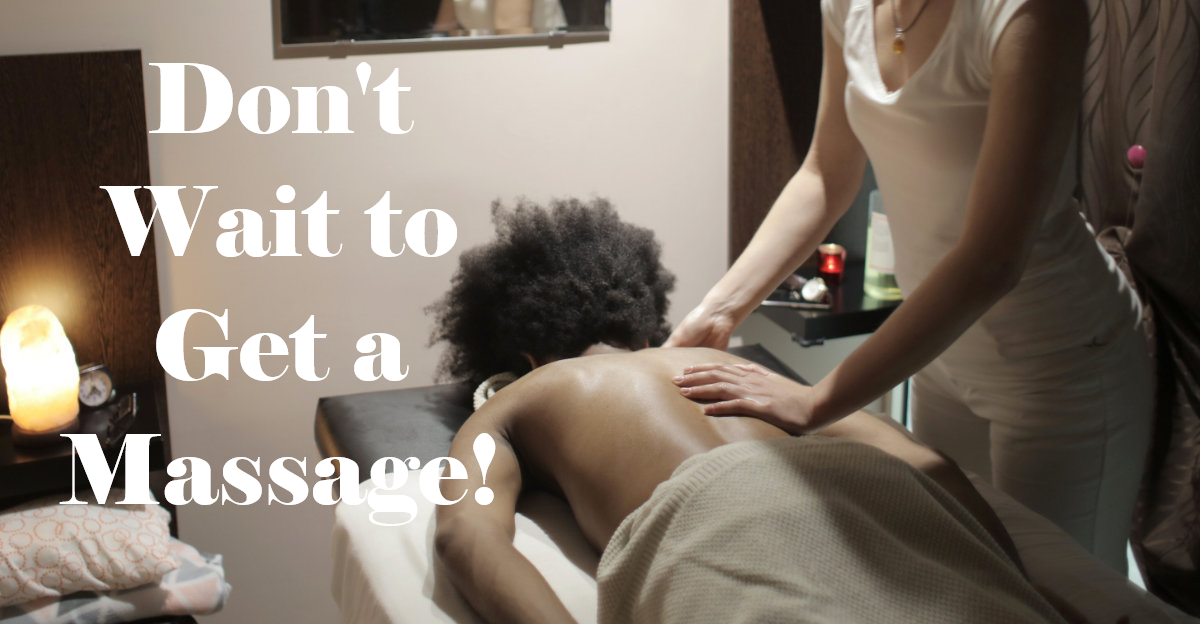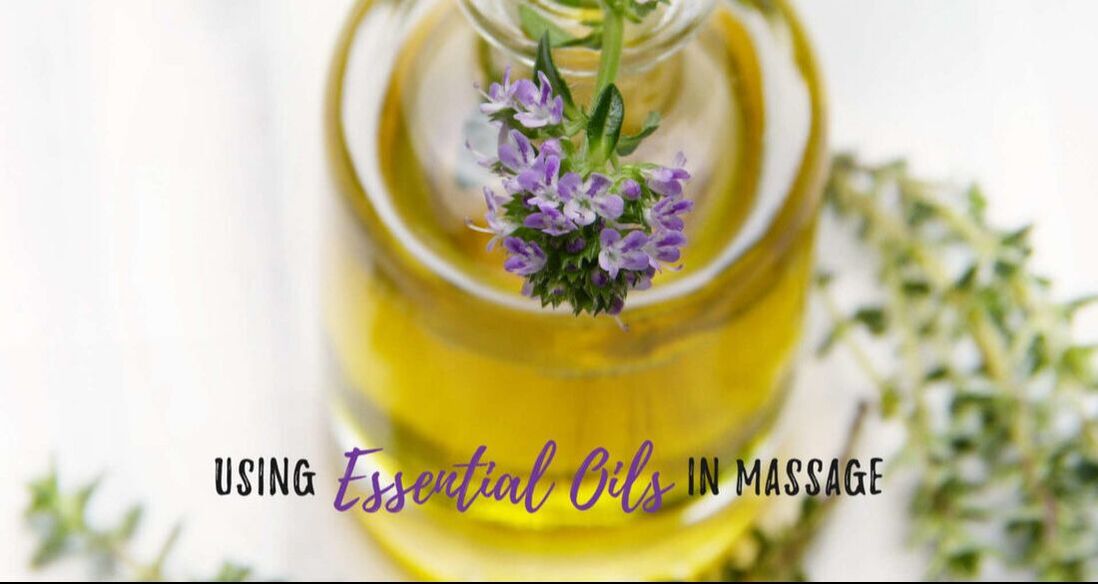|
Are you the type of person who puts off getting a massage? Do you fall into the trap of thinking that because nothing actually hurts, you don’t need to worry about it? Many people think the same way, but you may end up wishing you had booked ahead of time instead of needing a last-minute appointment to address acute back pain or the flare-up of a chronic injury. Massage can provide relief if you do have an injury or are already in pain, but why wait until there’s something wrong before you take action? Massage can be part of your preventative therapy, a way to stop aches and pains from developing into anything more serious.
Keep On Keeping On... Most of us have to work on a daily basis, and looking after your back and your musculoskeletal system will save you and your employer a lot of stress and money in the future. It’s startling, but did you know that according to the Global Burden of Disease 2010, a staggering thirty-one million Americans say that they are dealing with the symptoms of low back pain at any one time, costing over $50 million dollars in conventional medical treatments, worker’s compensation, and absence from work? Why risk it when a study that was carried out in 2011 proved that having regular massages helped to relieve the pain before it got to the stage where it needed medication or required taking time off from work? Stress-Busting Massage Another cause of time off work is stress and/or anxiety, so you’ll be pleased to hear that a regular massage session can help you beat the build-up of stress and keep you feeling calmer for longer. It’s well known that many conditions are either brought on or made worse by stress. Making time for regular massage therapy helps to lower your body’s cortisol levels and increase the happy hormones serotonin and dopamine. It really puts you in a better mood. On top of this, it’s also thought that because a deep tissue or Swedish massage in particular helps to get your lymph fluid moving, this type of massage can also help boost your immunity. This means less coughs, colds and illnesses, which is all good! Beat the Pain of Inactivity Many of us can’t help it, but the average American sits still for eight or nine hours every single day. If your job means that you have no choice but to sit at a wheel or desk, it will pull your shoulders forward and cause them to become rounded. This has the effect of weakening your upper and lower back muscles, which is why you might be feeling that pain in your shoulders and back. If you are able to get up and about regularly to do some quick stretching or activity, and you pair this with a regular massage, your posture will thank you and you should reduce any pain you feel from sitting still for so long during working hours. Have we convinced you to make a massage part of your regular routine? Of course, it’s not all about preventing illness or relieving pain; receiving a massage is a therapeutic and beneficial therapy in itself, and many people book regular massage therapy sessions just because they know they will climb off the massage table with a smile on their face, feeling amazing!
7 Comments
If you’re a regular to massage, the concept of a muscle knot is probably something you’re well aware of, but what are they exactly? And what’s the relationship between a muscle knot and a trigger point? What’s a trigger point? Trigger points are simply tender spots on your body that ‘trigger’ or cause discomfort. These tender spots are common and many of us have them, but for some people they can become really troublesome. They are common in hot-spots like the shoulders and neck, but they can crop up just about anywhere and in some people, they can cause a lot of pain. A trigger point is like a ‘knot’ in your muscle or the fascia (the thin wrapping around each muscle), which is why they are often referred to as a muscle knot. To a massage therapist it feels like a hard contraction on the on the muscle fibers connected to it, like a tight band around the muscle. Trigger points in muscles are ‘myofascial trigger points’ – and there are other types of trigger point that can occur around the body, on your skin, ligaments and tendons, and on scar tissue. How can you tell if you have a muscle knot or trigger point? You’ll be able to tell where your own trigger points are; if you touch them with any kind of pressure you’ll notice they start to hurt, or hurt more. They are often situated close to problem areas for you as well. If you have back issues, your trigger points are likely to be around your back, neck and shoulders, although this isn’t always the case. The range of sensations you might feel from a trigger point can be quite wide, too; anything from intense pain to a dull, throbbing ache. Some people feel ‘pins and needles’ or numbness. What causes trigger points to flare up? One theory is that they are related to some sort of muscular overload - if you’ve been working out too hard or overdoing it, or just not been taking care of your posture. Muscle fibers, or portions of them can stay contracted or become inflamed. How are Trigger Points treated? If you notice a sore spot and want to see a massage therapist for advice, we’d advise having a word with your medical adviser first just to make sure that any swelling or soreness is just down to muscular stress and nothing more serious. Once you’ve been checked over, we can start to look at the problem and help you to heal it with massage. A good massage therapist will be able to work on your trigger points and muscle knots, gently but firmly helping them relax and release. They can also help you with in-between treatment massage techniques to try at home that will ease any discomfort and help to prevent the muscle knots building up again. Trigger points and tender spots can cause a huge amount of pain and discomfort, often restricting your movement and your ability to do the activities you want to. You don't have to put up with this pain though, with some action on your part you can be pain free! Otherwise known as aromatherapy massage, a massage using essential oils is a real treat, and has many positive effects that make it a treat worth investing in. There are two main reasons why a massage therapist may use essential oils in their treatments:
• The essential oils used in massage can have beneficial effects on your body and overall health. • They smell great. But the aroma isn’t just a pleasant addition to your treatment. By inhaling the oils and applying them topically, you can receive multiple layers of benefits. Essential oils can have physiological effects like helping to relieve muscle tension and stiffness, reduce muscle spasm, and enhance circulation. They can also have psychological and emotional benefits such as helping individuals cope with pain, reduce stress and relax, and improve mood. Essential oils and pregnancy If you’re pregnant, you should always tell your massage therapist before an aromatherapy massage because although essential oils are safe in the vast majority of cases, there are a few specific essential oils that are best avoided in the first trimester of pregnancy. Essential oils and pain relief Using essential oils in a massage is ideal if you’re experiencing symptoms like inflammation or pain. The aromatherapy adds an extra layer of benefit to a soothing massage and seems to magnify the effects of a treatment which can give you even more relief than a basic massage. Essential oils and stress Just breathing in the relaxing scent of lavender essential oil can calm you down and help you sleep. Lavender essential oil is great for pain relief and widely used in stress-busting massage treatments. So what is an aromatherapy massage like? The first thing you’ll need to do is have a talk with your therapist about what you are hoping to get from your massage, and explain all about any existing health conditions so that they can choose the best combination of oils for you. There are pre-blended mixes of essential oils for general use, but many therapists also make up their own mixes for each session. When therapists are putting together a custom blend, they will often ask you to pick a fragrance that makes you feel good. There’s not much point in creating perfectly blended massage oil for you if you don't enjoy the smell of it and can’t wait to get off the massage table! If there’s any of your custom blended oil left after your massage, you’ll be given the rest to take home and use, which is a definite bonus. After an aromatherapy massage you’re likely to feel absolutely amazing – not only have you had the physical benefits of a therapeutic massage but the psychological boost that you’ll get from the essential oils as well. What’s your favorite aromatherapy oil? A regular massage is often considered to be a treat, rather than a necessity. Most people believe that having a massage is good for aches and pains, or can help if they’ve overdone it with exercise. Not everybody realizes that massage therapy is also an effective intervention that can help people with chronic back problems reduce their discomfort and improve their quality of life.
Americans spend at least $50 billion each year on back pain and if you’re one of the 31 million Americans who suffers with back pain at some point in their life, you’ll know how miserable it can be. If you are dealing with chronic back pain – which is pain that’s lasted more than three months and less than six - it can impact on your daily life, and stop you doing the things you want to do. You could be reliant on drugs to keep you mobile or help you sleep. Some issues don't get better, sometimes even after surgery, so the focus is often on mitigating the pain and maintaining the ability to perform activities of daily living. The vicious pain cycle If you can no longer exercise pain-free, you might end up in a vicious cycle of inactivity which makes your pain worse, which can stop you from being active. Taking more medication just masks the problem. Also, opioids like codeine can lose their power over time as you build up a tolerance to their effects. They can also have unwanted side effects. What you need is a way to treat your back pain that is effective but doesn’t have the side effects. Luckily, research has shown that regular massage along with your prescribed medication and any other advice from your healthcare provider can help you manage your back pain and start to live a more active life. How massage can help beat back pain A massage session doesn’t just relax you, it can help to promote tissue repair, increase blood circulation and improve your stress levels and mood. Recent research showed that regular massage therapy combined with exercise helped people suffering from chronic back pain to feel less anxious about their condition too. The study, which took place at a pain management clinic in Western New York, involved sixty chronic low back pain patients who were split into two groups. One group received regular massage therapy, twice a week for four weeks, along with their regular treatment, and one group only carried on with their prescribed treatments. The participants all recorded their own pain levels before and after having massage therapy on a scale of one to ten. There was a significant difference between the pre- and post-treatment pain rating in the group that had regular massage, but the control group who maintained their normal treatment plan reported no changes to their pain levels. If you suffer with back pain and want to see what massage can do for you, book a session now and let us help you feel better! |
AuthorBella Terra Organic Spa and Shoppe in Evansville, Indiana. Sharing stories regarding healthy living, holistic wellness, and green beauty. Archives
September 2023
Categories
All
|





 RSS Feed
RSS Feed
